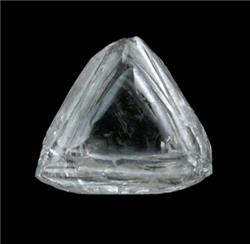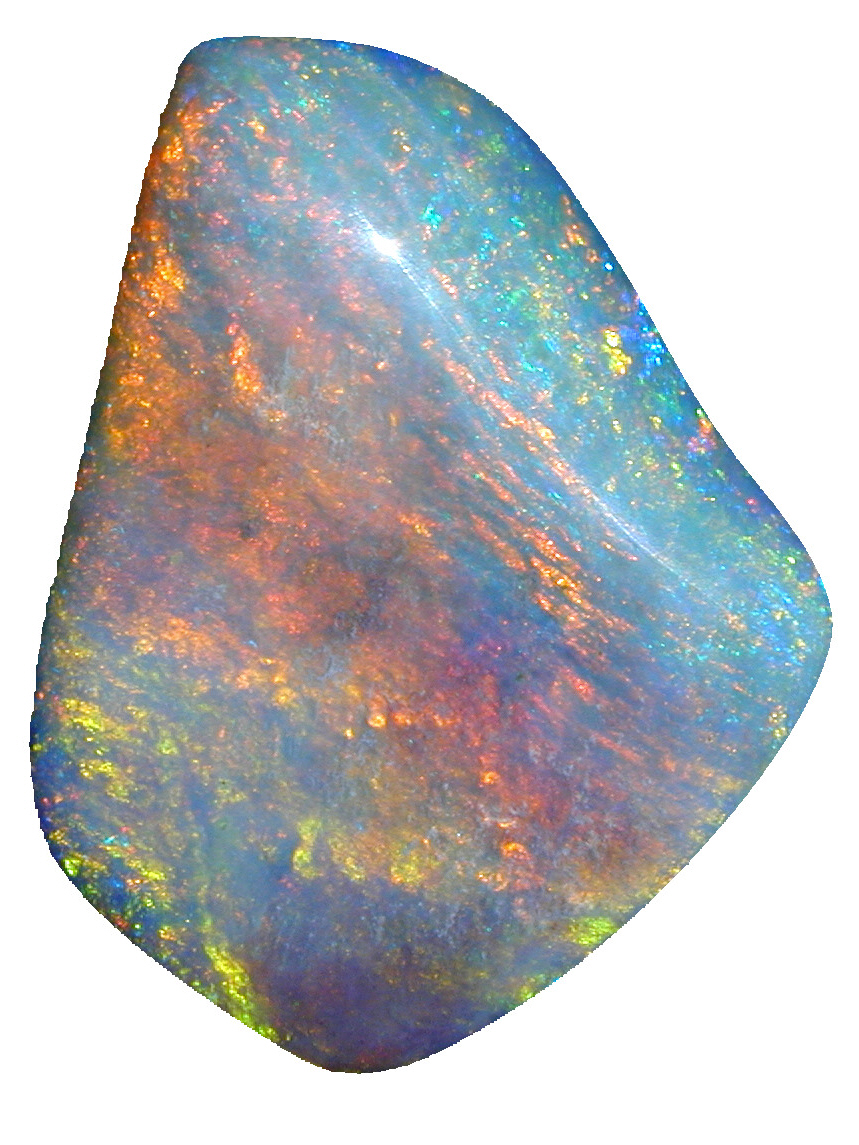I bumped into Steven and asked him if he would like to talk about the opal fields near his home. He submitted this article and pictures.
Hi Gary,
Here is the brief history and present day story about Grawin, Glengarry, and Sheepyard Opal Fields.
Cheers
Steven
The Sheepyard opal field is located approximately 75km west of Lightning Ridge, NSW and forms part of a triangle of opal fields consisting of Grawin, Glengarry and Sheepyard
Opal was first discovered at Glengarry in 1905 by Mr Charles Phipp who was working on Morendah Station at the time, but little mining was done there. The Grawin was established in 1908 with the discovery of the opal at “Hammond Hill”. Further discoveries in 1920 at “Richards Hill” put the unofficial village on the map. Since the first discovery of opal in the region, people have come and gone in tides with each new strike, seeking their fortune in search of the rainbow in the rock. At the time mining was done by candle light with a hand pick and the waste was removed by shovel and bucket and wound up by hand with a wooden windlass. In 1928 an opal weighing almost 450g, and the size of a man’s fist was found at Richards Hill and caused a rush of men to this field. The opal was named “The Light of the Worlds” and is still the best known opal from this area. After the Second World War things began to get more mechanical with the electric generator for light and motorised hoisting gear to make the removal of waste quicker and a bit less like slave labour. Then came the electric jackhammer and the amount of dirt that could be removed increased and the bucket was replaced by wheelbarrows and all sort of inventions to make the job better for the miner and in turn caused an increase in the number of people who came to have a go. The next major rush was started on Melbourne Cup Day in 1985 when the Sheepyard Rush was found. The Sheepyard area was named after a stumble on of opal near the fence of the old Sheepyard. By now the piles of dirt were starting to fill the landscape and this lead to the Short Throw self tipping hoist and tip trucks to remove waste. This led to the invention of the rickshaw to wheel waste to the hoist bucket. By the time the 90′s came along a new rush called Carters Rush had started and Blowers (Giant Vacuum Cleaners) were in use as well as underground hydraulic diggers and mini loaders and as many different inventions as there are miners are now being used in search of the thing that all miners, young and old lust after, “The Rainbow in a Rock”
Opal
Although mining at Glengarry was also going on for some time it was not until about 1970 when a find of some very good opal was made that Glengarry became the new “Hot Spot.” The Mulga Rush, which began in 2000, is the biggest opal rush since the Coocoran was discovered in the early 1900′s.
https://youtu.be/lE2j10xyOgI -click- 1964 Quake: The Great Alaska Earthquake
Free Geology Books!
I found this site offering free geology books. 51 books on this page alone:
http://worldofgeology.weebly.com/free-geologic-books-1.html
And 18 books on this page:
http://worldofgeology.weebly.com/free-geologic-books-2.html
Samples of the books below:
ENJOY! http://rockhoundblog.com/category/free-books/
RELATED 
Diamond Macle PUBLICATIONS
Canadian Consulting Engineer Magazine
www.canadianconsultingengineer.com
Eco Log ERIS
www.ecologeris.com
Eco Log Week
www.ecolog.com
Hazardous Materials Management Magazine
www.hazmatmag.com
Machinery and Equipment MRO Magazine
www.mromagazine.com
The Northern Miner Newspaper
www.northernminer.com
OHS Canada Magazine
www.ohscanada.com
Scott's Directories
www.scottsdirectories.com
Solid Waste & Recycling Magazine
www.solidwastemag.com
Polymer Search on the Internet
www.polymer-search.com
___________________________________________________________________________________________________________________________________
What is Corundum and What are its Basic Qualities?
Corundum is an aluminum oxide that commonly forms hexagonal barrel-shaped prisms that taper at both ends or as thin tabular hexagonal plates. It has a hardness of 9 on the Mohs scale, making it one of the most durable commercial gemstones. It has no dominant cleavage and fractures in a conchoidal manner. A high density of ~4.0 g/cm3 (most silicate minerals are ~2.6 g/cm3) results in corundum occurring in secondary placer deposits and recoverable by panning methods, similar to how you would recover placer gold.
Corundum comes in all colours of the rainbow but is most commonly found as opaque crystals with dull colours. Red corundum is called ruby, blue corundum is called sapphire, and all other colours are called fancy sapphires. Some varieties of corundum will fluoresce under short wave and long wave UV light if there is enough chromium in the crystal structure but little iron, which tends to quench any emitted energy.
http://www.eos.ubc.ca/courses/Dist-Ed/eosc118-webpromo/01-modB-les17-webpromo.htmlWhat Colours can Corundum Have, How are These Colours Generated, and What Gem Varieties Result? (more photos)
Pure corundum is colourless and clear if transparent or pale white if opaque. This mineral also has low dispersion so the value of the stones comes not from fire generated (as in diamond), but rather from the intensity of colours seen. The vivid colours of corundum gem varieties, such as ruby and sapphire, arise primarily from elemental substitution in the Al site by transition metal elements. The most common cations to substitute are Fe+2, Fe+3, Ti+4, Cr+3, and V+3.
A continuum of colour saturation exists between pink sapphire and ruby that is correlated with trace amounts of Cr. There is no official cutoff for the amount of Cr needed for ruby, but usually rubies will have up to ~1 wt% of Cr2O3. When Cr substitutes for Al, wide absorption bands are generated in the violet (~450 nm) and green-yellow (~500 nm) ranges, as well as overlap a bit into the blue region. The red region of the electromagnetic spectrum (~650 nm) does not have very much absorption at all and results in all colours but red being blocked by ruby.
But there is another trick up ruby's sleeve that makes its red almost jump out at the observer. When Cr is introduced into corundum it makes the mineral fluorescent under UV light. This means that UV energy from normal light is accepted into the crystal and then re-emitted at a lower energy level - conveniently in the red region, thus amplifying the intensity of red in ruby under daylight conditions. However, if any iron is present it will usually absorb the red fluorescence from UV light. Thus, the finest rubies are those that have little to no iron in their crystal structure.
Blue sapphires are generated primarily from pairs of Fe+2 and Ti+4 substituting into the crystal structure for Al+3. The process of intervalence charge transfer (essentially continual swapping of electrons, bouncing back and forth) occurs between the Fe and Ti and all colours except blue are absorbed. So like ruby, it is the absorption of all other colours from full spectrum light (aka white light) that generates the beautiful blues in sapphires, rather than the "generation" of the blue colour. Very small amounts of these elements (only ~0.01 wt% Fe and Ti) are needed to produce the vivid blues.
Other colours are generated from a combination of these elements, as well as other minor cations and defects in the crystals. Also, a single corundum gemstone can be multi-coloured from different concentrations of metals in different parts of the crystal - this is called zoning.
Some sapphires also show an optical characteristic called asterism, which is most commonly seen as a six or twelve pointed star. These "arms" of the star are generated from oriented inclusions of long and skinny minerals (almost always the mineral rutile, a titanium oxide, TiO2). Specimens found with these inclusions are often cut and polished in a rounded and polished cabochon style to emphasize the nature of this optical effect. Rutile inclusions can occur in both sapphires and rubies, although it is more common in sapphires.
Sapphires
|
Size, carats |
Approximate value per carat, USD |
| Less than 0.5 | $175 to $200 |
| 0.5 to 1.0 | $200 to $350 |
| 1.0 to 2.0 | $350 to $600 |
| 2.0 to 5.0 | $600 to $1000 |
| More than 5.0 | $1000 to $2500 |
SUPPORT ORGANIZATIONS
British Columbia & Yukon Chamber of Mines
www.bc-mining-house.com/chamber
Canadian Association of Mining Equipment & Services for Export
www.camese.org
Canadian Copper and Brass Development
www.ccbda.org
Canadian Institute of Mining, Metallurgy and Petroleum
www.cim.org
Canadian Mining Industry Research Organization
www.data.ctn.nrc.ca
Canadian Nuclear Associationion of Canada
www.cna.ca
The Coal Associat
www.coal.ca
The Gold Institute
www.goldinstitute.org
International Cadmium Association
www.cadmium.org
International Copper Association, Ltd.
www.copper.org
Mines and Aggregates Safety and Health Association
www.masha.on.ca
The Mining Association of Canada
www.mining.ca
Mining Suppliers, Contractors & Consultants of British Columbia
www.mining.bc.ca
Nickel Institute
www.nidi.org
Northern Centre for Advanced Technology Inc.
www.norcat.org
Northwest Territories Chamber of Mines
www.miningnorth.com
Ontario Mining Association
www.oma.on.ca
Prospectors & Developers Association of Canada
www.pdac.ca
The Silver Institute
www.silverinstitute.org
Yukon Chamber of Mines
www.hypertech.yk.ca/business/whitehorse/ycmines/chambe
FEDERAL & PROVINCIAL GOVERNMENTS
British Columbia Ministry of Energy and Mines
www.em.gov.bc.ca
Indian Affairs and Northern Development
www.inac.gc.ca
Manitoba Department of Energy and Mines
www.gov.mb.ca/em
Natural Resources Canada
www.nrcan.gc.ca
NRCan CANMET
www.nrcan.gc.ca/mms/canmet-mtb/mmslwelcome
NRCan Geological Survey of Canada
www.nrcan.gc.ca/gsc/
New Brunswick Department of Natural Resources and Energy
www.gov.nb.ca/dnrc
Newfoundland and Labrador Department of Mines and Energy
www.gov.nf.ca
Northwest Territories Department of Resources, Wildlife and Economic Development
www.gov.nt.ca/rwed/mog/index.htm
Ontario Ministry of Natural Resources
www.gov.on.ca
Ontario Ministry of Northern Development and Mines
www.gov.on.ca/MNDM
Prince Edward Island Department of Development
www.gov.pe.ca/edt
Quebec Department of Natural Resources
www.mrnfp.gouv.qc.ca/english/mines/index.asp
Saskatchewan Department of Energy and Mine
www.gov.sk.ca/enermine

 is occasionally found in the mines of Colombia. A trapiche emerald exhibits a “star” pattern; it has raylike spokes of dark carbon impurities that give the emerald a six-pointed radial pattern. It is named for the trapiche, a grinding wheel used to process sugarcane in the region. Colombian emeralds are generally the most prized due to their transparency and fire. Some of the most rare emeralds come from three main emerald mining areas in Colombia: Muzo, Coscuez, and Chivor. Fine emeralds are also found in other countries, such as Zambia, Brazil, Zimbabwe, Madagascar, Pakistan, India, Afghanistan and Russia.
is occasionally found in the mines of Colombia. A trapiche emerald exhibits a “star” pattern; it has raylike spokes of dark carbon impurities that give the emerald a six-pointed radial pattern. It is named for the trapiche, a grinding wheel used to process sugarcane in the region. Colombian emeralds are generally the most prized due to their transparency and fire. Some of the most rare emeralds come from three main emerald mining areas in Colombia: Muzo, Coscuez, and Chivor. Fine emeralds are also found in other countries, such as Zambia, Brazil, Zimbabwe, Madagascar, Pakistan, India, Afghanistan and Russia.






